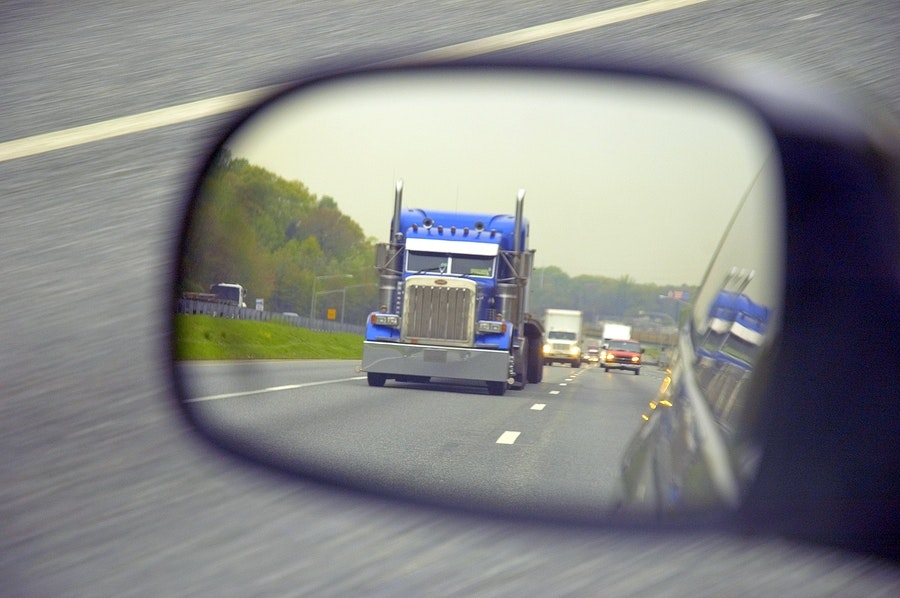Self-Driving Trucks: Looking at the Risks

I came across this article on Insurance Journal (of course!) today.
Can a Self-Driving 40-Ton Truck Be Safe? Developers Say Yes But Others Are Skeptical.
The optimist in me says that yes, self-driving trucks can be safe.
The risk analyst in my says that I have questions about how they can be made safe.
The insurance nerd says maybe. They might be safe, but we’re not sure how to best provide coverage.
Before you start your apocalyptic playlist, understand that two very different facts are true.
First, there are vehicles with varying degrees of autonomy all around you anytime you’re driving, especially when you take the onramp to the nearest interstate highway.
Second, we are many years away from the autonomous vehicle revolution if we ever fully get there.
With that out of the way, we can certainly say that a properly outfitted, operated, and monitored autonomous truck can be as safe as any other vehicle on the road. I didn’t say that it isn’t without risks or that it is perfectly safe. Given today’s road conditions, traffic, and driver attitudes, an autonomous truck can be as safe as any other truck on the road today.
When you read autonomous vehicle, you’re probably thinking about George Jetson putting his feet up on the dash of his flying car (oh, could someone please get me a flying car?) and letting the car fly him to work or home. The truth is far less exciting than that. Almost every vehicle on the road has a degree of autonomy. From cruise control to passive lane assist, those vehicles are taking control from the human driver and operating the vehicle.
What are the risks?
The first risk that comes to mind is the possibility that drivers might be injured by the autonomous vehicle. This almost seems counterintuitive to some because they see the possibility of increased safety when a fleet of autonomous vehicles is on the roads. While may ultimately be true, there is still the period between today’s state and any future where most if not all vehicles are autonomous.
Today, the autonomous vehicle must deal with the flood of other vehicles with lower levels of autonomy, including fully human-driven vehicles. Because the human drivers on the road must act and react, anticipating any possible reaction by the drivers of other vehicles on the road, while being individually difficult to predict, an issue of safety does arise.
The questions that need to be answered are how the autonomous vehicle will both let the human drivers around it know that it is not being driven by a person and how will it react to the human drivers surrounding it. Since the actions of individual people are hard to predict, the autonomous vehicle needs to be able to find the best possible reaction to other drivers on the road.
Another risk that we should consider is the risk to other people’s property. As the article tells us, we are not looking at something the size of a Roomba driving around, bumping into things, and course correcting. We’re talking about 40-tons of truck and cargo moving at speeds of 60-80 miles per hour. That’s a lot of energy, especially if it makes contact with other people’s property.
This is in part an extension of the risk of injury to a person in that the primary risk that we’re thinking of here is the risk of damage to property that’s on the road. This is mostly the other vehicles on the road and anything in them.
We must also consider that autonomous vehicles may not only drive on interstate highways, but may also drive along country highways, city streets, and even deliver the property to your favorite restaurant in your town. That brings us to the possibility that autonomous trucks may damage other property.
Another risk to consider is loss of, damage to, or theft of the truck and its contents. While the critics that are concerned about the safety of autonomous vehicles aren’t talking about this, it’s a real risk that those who might deploy autonomous technology must consider.
It’s the other side of the coin of what happens when one of these vehicles has an accident. We’ve already dealt with the risks faced related to injury to other drivers or damage to other people’s property, but what about the property that’s being moved and the truck itself? There is clearly a chance that the vehicle and its cargo will be damaged if there is an accident, whether it is with another vehicle or a single-vehicle accident.
There is another risk to address that could be a potential cause of the risks that we’ve looked at already. That’s the risk that the owner of the autonomous vehicle loses control of it or loses track of it. We are considering autonomous vehicles, which seem to preclude remote operation of vehicles, but even an autonomous vehicle would have a planned route and should be trackable. Therefore, we have to consider the risk that the vehicle does something unexpected.
This risk comes from the possibility that the programming fails in some way, causing the vehicle to deviate from its expected course. Any number of programming issues could cause this sort of failure, from a coding error in the software to a data error by the route programmer, to a power failure that resets everything.
There is also the risk of the autonomous vehicle being hacked or hijacked. We’re not necessarily thinking about a Mission Impossible-style heist where the hijacker jumps from another vehicle or repels down from a helicopter above while the truck is traveling at 75 miles per hour down a crowded interstate through some city.
As an autonomous vehicle, there have to be multiple signals that it will send and receive, including GPS to allow it to know where it is and to report that location to someone else and sending and receiving what I can best call other telemetry, including speed, fuel level, oil pressure, and other necessary data to someone. If signals are being sent and received by the vehicle, it’s possible that those signals can be hacked or hijacked, allowing someone else to take control of the vehicle. At best that means that the vehicle is sent to a location other than where it should go, and the cargo stolen. At worst that means that the vehicle becomes a weapon in the hands of someone else.
How can the risks be mitigated?
I mentioned at the beginning of this that an autonomous truck can be safe if it is properly outfitted, monitored, and operated. This is true, even in the current operating climate.
Before going any further, I am not necessarily recommending a full level five autonomous vehicle where there is no option of a human driver. It’s not time for that. In truth, I doubt that there would be much appetite for that in much of this country. Some people (me) just love to drive.
The truck will clearly need to be outfitted with all of the necessary cameras, sensors, computing power, software, radar, and mechanics that facilitate its ability to drive and know what’s going on around it. Beyond that, why not outfit it with placards? “Self-driving vehicle. Follow (Pass) with care.” “There is no driver in the cab. Keep that in mind as you pass.” “My computer drives better than your driver.”
Since we are concerned about the truck’s cyber security, it should be outfitted with appropriate hardware and software designed to allow only those signals that are necessary and to reject any unauthorized signals from accessing it or its data.
It will also need to be outfitted with the ability to report information about itself because it does need continual monitoring.
The proper monitoring of an autonomous truck requires that it be outfitted with an array of cameras, sensors, transmitters, and receivers so that it can be tracked. This may not be as necessary as the technology progresses, but now, with it in an infancy stage, with very few similar trucks on the road, it must be able to be continually monitored. The data collected must include location, location history, speed, projected route, fuel level, projected fuel stop, oil pressure, engine temperature, charging system status, engine speed, tire pressure, estimates of tire wear, and probably a few other factors as well. This is all because someone needs to know whether or not the truck can get to its destination.
Since this level of autonomy is currently the exception, rather than the rule, there will need to be both automated monitoring and human monitoring. Redundant monitoring capabilities reduce the risk that some piece of critical information falls through the cracks. Does it eliminate that risk? Certainly not, but it does mitigate it and that’s what risk management is about anyway.
The proper operation of an autonomous truck carrying cargo from one location to another is a bit more complicated than just programming the thing to go where it’s supposed to go and leave it at that. In this case, I’m suggesting that the autonomous vehicle have a human driver available for certain functions. In short, the vehicle should drive itself in more or less an autopilot mode on interstate highways, certain US routes, and some state routes that are more than two-lane highways.
Whenever the truck needs to exit an interstate, travel on two-lane roads, or make other potentially complicated maneuvers with increased potential for accidents, there should be a human driver available. In short, the truck operates much like commercial air traffic, where the human pilot operates during take-off, landing, and any other time as needed, but the bulk of the cruising is done on autopilot.
Over time, that human driver could move from within the vehicle to a remote location where the driver is immersed in a virtual reality driver’s seat that emulates the driving experience without having to be present all the time, reducing the number of required drivers over time.
Given the fact that even an autonomous truck needs to refuel, it would be handy to have a human driver that can pull the truck to the fuel pump, and actually pump the gas. If there isn’t a human driver pumping gas, then you have to hire attendants who will need to pump the gas and charge the trucking company for it. It’s also good to have a human driver on board if the truck has some kind of mechanical issue, whether it’s a tire that blows out, an engine that goes bad, or some other mechanical issue.
For now, fully autonomous vehicles are not in our immediate future, but the technology is progressing and there are more sophisticated partially autonomous vehicles in our near future and that future does require consideration of the risks involved and how we might best mitigate those risks.
Topics
Personal Auto
Autonomous Vehicles




